This page contains affiliate links, which are links that pay me a small commission without changing your price. You can click here for my affiliate disclosure.

Bookmarks
- What is Trim Healthy Mama?
- How do I start?
- Which book do I need?
- My Trim Healthy Mama journey
- Helpful pages
- Popular tips posts
- Sweeteners
- Flours
- Other ingredients
- Baking tips
- List of my favorite desserts
- Helpful equipment
- Companies I purchase from
TIP: There is a dedicated baking tips section on this page, but also be sure to check out the sections on sweeteners, flours, and other ingredients for more baking and substitution tips using these alternative ingredients as well as info about where they can be purchased. Check out the section on companies I purchase from to see exactly what I buy where.
What is Trim Healthy Mama?
Trim Healthy Mama is primarily a healthy way of eating, but it doubles as a way to reach and maintain a healthy weight. The Trim Healthy Mama (THM) approach is centered around low glycemic eating: eating food that doesn’t spike your blood sugar. (Drastic blood sugar spikes lead to health problems as well as weight gain, so stabilizing the blood sugar leads to increased health and a healthier weight!)
WHAT IT DOES:
- Centers around protein. All THM meals are centered around a protein source.
- Focuses on real food, not processed junk. Refined sugars and flours are out because they readily spike the blood sugar.
WHAT IT DOESN’T:
- Cut out any major food groups. Both healthy fats and slow burning carbs are welcome!
- Eat fats and carbs at the same time. To rev up the metabolism, THM advocates eating either fats or carbs in a meal (centered around protein, of course), but not both at the same time. (Pregnant and nursing mamas and growing children are exceptions to this because they have higher metabolic needs. People at goal weight can also make use of crossovers – what we call the combination of carbs and fats in the same meal. Crossovers (XOs) aren’t unhealthy, they’re just not as slimming as single fueled meals. That being said, a crossover is better than going off plan, and it’s just fine to enjoy a crossover as a treat once in awhile.)
WHAT’S UP WITH THE ALPHABET LETTERS?
Trim Healthy Mama recipes/meals are categorized as follows:
- (S)atisfying – S meals focus on protein + healthy fats and keep carbs to a minimum.
- (E)nergizing – E meals focus on lean protein + healthy carbs and keep fats to a minimum.
- (F)uel (P)ull – FP meals focus on a moderate amount of lean protein and keep both fats and carbs to a minimum. They really “pull the fuels” back for a metabolism shake-up. Fuel Pull ingredients are neutral, so they can be added to either an S or an E meal! They’re your freebies. Things like non-starchy veggies, berries, spices, and low-fat dairy products fall into this category.
- Crossover (XO) – Crossover meals combine protein, carbs, and fats in the same meal. These meals are still healthy but not as slimming as the previous three.
THM focuses on ingredients rather than numbers (although Serene and Pearl do offer a few numbers here and there for those of you who like hard-and-fast guidelines), and you can find lists of S, E, and FP ingredients in the THM Plan Book.
HOW DO I START?
- Read the THM Plan Book. This is a non-negotiable point in my opinion if you really want to understand the THM plan. (And you’ll get really frustrated if you don’t!) If you can’t afford to buy it, request it at your local library!
- Cut out flour, sugar, potatoes, white rice, corn, and their derivatives. Sprouted or fermented grains/flours are fine because they’ve been broken down to a state kinder to your blood sugar, but keep in mind that storebought items that tout the “sprouted” label often use sprouted flours in conjunction with regular ol’ white or wheat flour. Sweet potatoes are a great carb source for an E meal, but white potatoes have a higher glycemic index so you should abstain from them. (Red, yellow, and other “waxy” potatoes can be used in moderation in a THM E setting.) Corn can be used in small amounts in E meals for flavor but is not recommended for weight loss. (After all, corn is one of the best ways to fatten animals quickly.) If you eliminate a lot of processed foods like bread, pastries, pasta, French fries, soda pop, and the like from your diet, you’re halfway there. Don’t worry – there are plenty of healthy alternatives! CLICK HERE for a long list of helpful ingredient substitutions or look for suggestions in the THM Facebook group or on Pinterest.
- Take it one meal at a time. Sure, you can try changing everything at once, but you might get burned out with that method. A more manageable way to start is to change over one meal at a time. Try eating on plan for breakfast for a week, then add lunch, then supper. As you learn the way the plan works, by the time you actually get around to making sure all your suppers are THM-approved you’ll probably have started making better choices anyway!
- Find healthy versions of your family’s favorite dinners instead of trying totally new recipes. This is a great way to get the whole family on board with you so you don’t have to cook two meals. Plus, it’s less daunting than leaping into totally unfamiliar territory! Most family favorites are easy to THMify, and you can find all kinds of healthy versions on Pinterest. You can find some of our family favorites made healthy here on my website, and my cookbooks include a lot more. CLICK HERE for a post that shows you how to THMify many family favorite entrees and side dishes!
- Give yourself grace. This way of eating is a big learning curve at first, but you’ll get it. If you stick with it it will become second nature faster than you think. And never forget: any progress is a step in the right direction!
Which book do I need?
Helpful THM Books
 Buy Now →
Buy Now →  Buy Now →
Buy Now →  Buy Now →
Buy Now →  Buy Now →
Buy Now →  Buy Now →
Buy Now →  Buy Now →
Buy Now → Trim Healthy Mama has gone through many iterations over the years! The original Trim Healthy Mama book (a thick tome of information and recipes combined, written in sisterly chat form) is no longer in print, but the newer THM Plan Book is my personal recommendation for those who want to learn the basics of the plan. It’s easy to read – think THM for Dummies. There are no recipes included – just the THM plan simplified. Trim Healthy Table, THM’s 2017 cookbook, includes a brief synopsis of the plan in its introduction, but I personally feel that a read through the THM Plan Book is in order for the best understanding of plan.
I have not personally read the Trim Healthy Starter Book so I’m afraid I can’t tell you much about it!
Trim Healthy Mama has produced 4 cookbooks so far: the Trim Healthy Mama Cookbook, Trim Healthy Table, Trim Healthy Future, and Trim Healthy Indulgence.
I have cookbooks too!
For more THM info
My Trim Healthy Mama Journey


The summer after I graduated from high school (2013), I worked for my grandparents in Holmes County, Ohio, at The Peach Barn selling South Carolina peaches. I’m afraid Der Dutchman creamsticks and apple fritters were as prevalent in my diet as peaches that summer, and my clothes were getting snug by the time I returned home.
When you sew your own clothes it’s very inconvenient to have to make a whole new wardrobe, so I opted to join my mom in trying this “Trim Healthy Mama” thing that was all the rage. I didn’t have a lot of weight to lose – maybe 10 pounds – but I quickly found that I just felt so much better eating a healthy diet free of refined sugar and flour without a lot of starches. I also realized that making this my way of life as a teenager would stand me in good stead later in life when I was raising a family and experiencing weight fluctuations through pregnancy and nursing.
I am now in that stage, and I’m so glad I have an understanding of a healthy diet to teach my children and help me maintain a healthy weight! I don’t follow THM 100%, especially when traveling or making food for company, but I try to be sensible in my splurges and not keep a bunch of junk around the house. The food I make for us here at home is primarily on plan, and when you’ve been eating healthy for nearly a decade you realize that consistency in the long haul is more important than a few months of perfection.
All of my recipes are THM friendly to the best of my knowledge!
I am not a THM coach, but you can browse the list of THM coaches in the Coaching Directory.
If you want to read more about me and how this blog got started, check out my About Me page.
Helpful Pages
- Sample Menus
- Helpful Ingredient Substitutions
- Gelatin Comparison
- Sweetener Conversion Chart
- THM Quick Start Guide from Trim Healthy Mama
- THM Quick Start Guide from Gwen’s Nest
- Greek Yogurt Tutorial
Popular Tips Posts
- Help! How Do I Plan Meals on THM?
- What My Typical Day Looks Like in Food Form
- My List of THM Staples and Where to Find Them
- Food Freedom or Gluttony?
- Do’s & Don’ts From a THM Veteran
- When You’re Overwhelmed on THM
- What to Do When the Scale Stops Moving
- My Top 10 Non-Special Ingredients for THM
- My Top 5 Most Used Special Ingredients for THM
- My Top 5 Kitchen Appliances for THM (and Why)
- “Can You THMify This?” Series
- Trim Healthy Mama Strategies That Are Working for Me!
- My Favorite THM E Meals, Snacks & Desserts
- My Go-To, Tried-And-True, Favorite Recipes
What ingredients do I need?
None! You can do this plan with what you already have in your cupboards. Nothing is required. However, you might find the plan more doable with some ingredients to help you make goodies or to replace some ingredients you’re used to cooking with.
Note: I label something as “no special ingredients” if all the ingredients can be found at Walmart or your local grocery store. Things like xanthan gum and almond flour are so much more readily available these days! When I label something as NSI I also assume that you can sweeten to taste with your favorite locally-sourced low glycemic sweetener (like Pyure, Truvia, or Swerve) if you don’t have the sweetener I used.
Sweeteners
common sweeteners

THM Pure Stevia Extract Powder
Buy Now → Buy Now →
Buy Now →  Buy Now →
Buy Now →  Buy Now →
Buy Now →  Buy Now →
Buy Now → Common Sweeteners
THM Pure Stevia Extract Powder :: I use this where I can because it’s the most concentrated sweetener, and therefore the most budget friendly. If you’re just coming off of sugar, pure stevia is probably not the best sweetener to start with. Stevia does well sweetening fruity things as well as yogurt, cream cheese based desserts, and shakes. I also use it to sweeten hot tea. Since stevia has some bitter notes, it doesn’t pair as well with other bitter flavors like chocolate or coffee. Note: the THM Pure Stevia Extract Powder comes with a “doonk” measuring spoon, which is 1/32 teaspoon. Yeah, stevia is that concentrated!
THM Super Sweet Blend :: I use Sweet Blend for most of my sweetening needs. It’s that sweet spot of not-as-concentrated-as-stevia but more-economical-than-Gentle-Sweet. I use this for most of my baking. Sweet Blend is a combination of erythritol + stevia.
THM Gentle Sweet :: If you’re just coming off of sugar and struggling with the taste of alternative sweeteners, this is a great sweetener to start with. It’s less concentrated than stevia and Sweet Blend and is made of erythritol + xylitol + stevia (although you can purchase a xylitol free Gentle Sweet if you have dogs in the house and don’t want to keep xylitol around). Gentle Sweet is less budget friendly than Sweet Blend, so I personally keep it for “special” things. It’s become my favorite sweetener to use in ice cream! (The xylitol in the Gentle Sweet keeps the ice cream scoopable right out of the freezer.) Gentle Sweet comes in powdered form (rather than granulated, like most sweeteners) so it’s great for things like frostings. I also like to use Gentle Sweet + Sweet Blend for a more balanced sweetness in chocolate desserts. Gentle Sweet may be less concentrated than the sweeteners above, but it’s still a lot more concentrated than sugar.
Erythritol :: This is a sweetener that I don’t use very often, but it’s a sweetener than measures similarly to sugar. A lot of erythritols leave a cooling sensation in the mouth, but I did not notice that with the THM brand.
Xylitol :: This sweetener is similar in concentration to erythritol and sugar. Xylitol can cause gastric upset in some people, especially if they’re not used to it, so beware if serving it to guests. Xylitol is also poisonous to dogs. One of xylitol’s neat qualities is that it keeps ice cream from freezing hard when stored in the freezer long term.
Many people like more sweetener than I do! Keep this in mind when making my recipes and adjust to taste.
Sweetener tips
- I do use THM’s sweeteners almost exclusively because they’re really high quality and the best tasting of any I’ve tried. That being said, you can find alternatives such as Pyure, Swerve, and Truvia at Walmart.
- I use the Great Value squirt bottle of liquid stevia (from Walmart) for sweetening things like hot tea and seltzer because it tastes good and is so handy – you don’t need to get out the doonk spoon!
- Be careful when buying stevia “blends” locally; they often have off plan filler ingredients.
- When sweetening something, always sweeten to taste to make sure you end up with a result you like. Through my years of blogging I have found that taste buds vary SO MUCH when it comes to alternative sweeteners. I prefer less sweetener than most people, so keep that in mind when making my recipes and feel free to add more to taste. I always take sweetener out of other people’s recipes…haha. If you think you don’t like the taste of stevia, just try using a little less. You’ll get less of an aftertaste that way. If the result isn’t sweet enough for you, combine the stevia with a less concentrated sweetener like THM Gentle Sweet.
- A pinch of salt can help round out sweetness.
- Sweetness will settle out a bit after overnight refrigeration, so alternative baked goods are often better the next day.
- Alternative sweeteners do not have the preservation properties of sugar, so alternative baked goods need to be refrigerated, not stored on the counter. They WILL go rancid.
- Baking or cooking alternative sweeteners reduces their sweetness. This is why I recommend sweetening after cooking when making a cooked ice cream base, for example. You may want to slightly oversweeten a baked good because it will lose some sweetness in the baking process.
- In general, the less concentrated a sweetener is, the more like sugar it tastes. But you have to use a lot more of it! I often use multiple sweeteners in recipes for a more balanced sweetness that doesn’t break the bank. (For example: THM Super Sweet Blend + THM Gentle Sweet instead of all Gentle Sweet)
- Glucomannan and xanthan gum can also mask sweetness.
- If you’re allergic to stevia (or don’t like the taste), check out monkfruit sweetener. Lakanto is one popular company that produces it. Their monkfruit extract is a good option for those of you allergic to both stevia and sugar alcohols.
- Use the THM Sweetener Conversion Chart to help you convert between sweeteners, but always sweeten to taste.
Flours
Common flours
 Buy Now →
Buy Now →  Buy Now →
Buy Now →  Buy Now →
Buy Now →  Buy Now →
Buy Now →  Buy Now →
Buy Now →  Buy Now →
Buy Now →  Buy Now →
Buy Now →  Buy Now →
Buy Now →  Buy Now →
Buy Now →  Buy Now →
Buy Now →  Buy Now →
Buy Now → common flours
THM Baking Blend :: a THM Fuel Pull blend of alternative flours great for easy baking. Available online.
Briana’s Baking Mix :: this is my homemade alternative to THM Baking Blend for those people who prefer to make their own or who have a nut allergy (THM Baking Blend contains almond flour). My baking mix is not for sale, but you can find the recipe here on my website or in either of my cookbooks and make your own! My mix is a little drier than THM Baking Blend, so check out the baking mix blog post for tips on swapping between the two.
Almond flour :: THM S :: since almond flour is made from nuts it’s pretty calorie dense and I try not to use it too often, but I like to keep it on hand for dessert crusts. Available from Walmart.
Coconut flour :: THM S :: coconut flour soaks up a LOT of liquid and often requires more conditioners like eggs, yogurt, or sour cream to be added to the recipe. Available from Walmart.
Oat fiber :: THM FP :: This is a really fine, dry flour that can usually only be found online. Not all brands are created equally – look for a brand that is light in color without a strong flavor. I usually buy LifeSource brand oat fiber from Amazon or Netrition. THM carries a gluten free oat fiber. Some people swap psyllium husk flakes and oat fiber, but I don’t have much personal experience with that and I know that psyllium husk can have a more rubbery texture in some recipes. I like to use oat fiber in my baking mix as well as for thickening things like soups and gravies (often in conjunction with a little xanthan gum).
Oat flour :: THM E :: Oat flour and oat fiber are NOT the same and cannot be interchanged! Oat fiber is pure fiber and is made from just the exterior husk of the oat. It has no net carbs or fats. Oat flour can be made at home by grinding old fashioned or quick oats to a flour consistency in a good blender. It’s a carb source.
Flaxmeal :: THM S :: This is a flour made from ground flax seeds. Golden flaxseed meal is preferable to the dark variety, but some brands don’t specify and it’s not a huge deal, especially if you’re just using it as part of a homemade baking mix (my primary use for it). Flaxmeal has gelling capabilities so it’s sometimes used as an egg replacement. Keep this in mind if using it in large quantities in a recipe – the texture can be a bit strange. Available from Aldi or Walmart.
Whey protein powder :: THM FP :: Whey protein isolate is preferable to whey protein concentrate if you’re following the THM plan. Personally I don’t worry too much about it as the nutrition info is very similar. Look for an unsweetened, unflavored protein powder if you want to use it in savory applications – or a baking mix. (That being said, I used Swanson’s unsweetened vanilla protein powder for years in my baking mix and the vanilla flavor isn’t prominent.) If you purchase a sweetened powder, make sure it’s sweetened with an on plan sweetener. (Most on the market are not, although there are more options now than there used to be!) Whey protein powder can make smoothies and blended drinks fluffier and creamier than collagen, but whey protein does have more of a flavor and for that reason I’ve switched almost exclusively to using collagen. Whey protein powder and collagen can help add structure to alternative baked goods (which is why you find it in my baking mix) – gluten is a protein, if that explains anything! Whey protein powder and collagen can usually be swapped in recipes. Try THM’s plant protein powder if you want a plant based protein powder.
Collagen :: THM FP :: this is a great non dairy alternative to whey protein powder. I use collagen almost exclusively over whey protein powder these days since I prefer the taste – or lack thereof. I prefer to keep unflavored, unsweetened collagen on hand so I can use it in anything. I usually buy collagen online.
Defatted peanut flour :: THM FP :: This is kind of like almond flour in that it’s a nut ground up into flour form, but this nut flour has had nearly all the fat removed so it’s super high in protein but low in calories! Use it in baked goods or to flavor things like oatmeal. You can make your own THM Fuel Pull peanut butter using defatted peanut flour! You may be able to find defatted peanut flour locally, but make sure it doesn’t have added sugar. I typically buy mine online.
White whole wheat flour :: THM E (must be soured) :: This is the flour I use for my sourdough experiments. I buy King Arthur brand, which I find at Target. You can order online from Amazon or King Arthur itself, but with shipping it’s much better to buy locally if you can. Check King Arthur’s website for a store finder.
TIP: I’m afraid that swapping between alternative flours is more art than science and always involves some experimentation. Most alternative flours soak up different amounts of liquid and have different properties that make a 1:1 substitution unwise. If you’re new to alternative baking it’s best to use the ingredients called for instead of trying to substitute.
other ingredients
other ingredients
 Buy Now →
Buy Now →  Buy Now →
Buy Now →  Buy Now →
Buy Now →  Buy Now →
Buy Now →  Buy Now →
Buy Now →  Buy Now →
Buy Now →  Buy Now →
Buy Now →  Buy Now →
Buy Now →  Buy Now →
Buy Now → This is not an exhaustive list – just a few of what I consider to be the most important staples to keep on hand that I use regularly. But honestly, there aren’t many more ingredients that I use on the regular. Things like baobab, sunflower lecithin, MCT oil, etc are great I’m sure, but I personally don’t bother with them. I don’t really do all the sipper drinks, or the trendy THM podcast recipes. I literally have oatmeal every morning for breakfast. I’m all for keeping things simple and doable!
Beef gelatin :: It’s fairly easy to find pork gelatin (Knox gelatin) at your local grocery store, but beef gelatin is easier to find online. THM and Great Lakes both sell good products. Check out my gelatin comparison post to see how to swap between Knox gelatin and beef gelatin. I like to use a combination of gelatin and glucomannan to thicken things like puddings.
Chia seeds :: These are easy to find at Walmart and Aldi. Great for puddings or adding texture to things.
Citric acid :: This is kind of a strange thing to put in my staples list, and it’s by no means essential, but it’s cheap and easy to find (check the canning section at Walmart or your local grocery store) and I find myself reaching for it quite often. I use it to help preserve fruit or to add a fruity pop to recipes that need a bit more oomph.
Coconut oil :: I buy this in a big bucket off of Amazon – Nutiva brand. You can use refined or unrefined, but I typically just keep refined on hand for cooking to keep things simple. Refined coconut oil does not have a coconut flavor, so it’s more versatile for use in sweet or savory dishes. You can find coconut oil at most local stores as well.
Glucomannan :: This is a natural thickener – basically your THM replacement for cornstarch. However it acts quite different from cornstarch and is much stronger, so start out with just a little in recipes and work your way up. “Gluccie” is activated by stirring/blending, heat, and time (same for xanthan gum). Too much and whatever you’re making will be slimy. When adding it to a recipe, add a little at a time while whisking or blending to avoid clumping. Glucomannan is great for keeping you full for a long time and balancing blood sugar, and you’ll often see it starring in shakes and puddings. I like to use a combination of oat fiber and glucomannan or xanthan gum to thicken gravies and soups. I also like to combine gelatin and glucomannan to thicken puddings. (Not relying on glucomannan alone makes for a less slimy texture.) Glucomannan and xanthan gum can generally be exchanged 1:1. THM sells a good glucomannan. It can typically only be found online.
Lorann flavor oils :: I primarily use regular strength extracts like Watkins or McCormick brand (from Walmart or a local grocery store), but I also like Lorann’s products. The flavor oils are super concentrated so you only need a little bit. These are great for flavoring drinks, smoothies, yogurt, and frostings. Some of my favorite flavors are Lime and Royal Raspberry!
Trim Healthy Mama’s Natural Burst extracts are more concentrated than regular extracts, so keep that in mind if using them in my recipes.
Sugar free chocolate chips :: THM sells their own chocolate products now, and they’re probably the healthiest option out there, but I do prefer Lily’s brand (which can now be found at Walmart!).
Vegetable glycerin :: I use this in ice cream to improve the texture and keep the ice cream from sticking to the sides of the churn. You may be able to find it in the skincare section of a health food store (NOW brand), but I always buy Essential Depot brand from Amazon. Cake decorating stores may carry it as well, but I’ve heard anecdotal evidence that some brands are stronger than others so keep that in mind.
Xanthan gum :: Xanthan gum has similar properties to glucomannan above, but it can be found locally. Walmart carries a nice size bag of it in the baking aisle.
I do most of my shopping at Aldi and Walmart and supplement some specialty items online. Check out the post below for a more in depth look into my pantry and my non specialty pantry staples.
Tips for alternative baking
Check the ingredient lists above for lots of other tips!
Give your taste buds time to adjust. Alternative baked goods will taste better once you get used to them and drop sugar from your diet.
Refrigerate baked goods overnight. This is a great rule of thumb for most baked goods (like cakes and muffins) – the texture improves after overnight refrigeration and the sweetness levels out.
Find a sweetener you like, and figure out if you like more or less than other people. Be sure to check out the section on sweeteners above for more sweetening tips. If you’re just starting out, keep in mind that a less concentrated sweetener (like THM Gentle Sweet) will taste more like sugar than a super concentrated sweetener (like pure stevia). And be mindful that taste buds vary drastically when it comes to alternative sweeteners. I would find a lot of things to be inedible if I used as much sweetener as other people’s recipes call for, and many people automatically double the sweetener in my recipes! *shrug* Find what you like, and always sweeten to taste.
Many people like more sweetener than I do! Keep this in mind when making my recipes and adjust to taste.
Follow the recipe. Even if you’re a whiz in the kitchen, alternative flours, sweeteners, and thickeners do not act like their traditional counterparts and you’re better off not making substitutions when you’re just getting started.
Don’t expect things to taste exactly like “the real thing.” Some people might hate me for saying this, but I think expectation vs. reality is where a lot of people derail. A cake made without glutinous flour or sugar is not going to have the same taste or texture as the original recipe. I find it much more helpful to learn to enjoy things for what they are. Maybe don’t try for the super light and fluffy baked good and go for something more dense and fudgy. Don’t call radishes or cauliflower “potatoes.” Just enjoy them for being their own things. Set yourself up for success.
Chewy cookies are not a thing. Sugar caramelizes and creates something sticky and chewy. Most alternative sweeteners do not. Gluten is a protein that creates structure and chew. Most non-glutinous flours don’t come close to this. Sure, you can hack some of those characteristics in unique ways using gelatin or chia seeds or collagen or extra eggs. But there’s a scientific explanation for why you’re just not going to get a truly chewy sugar free, gluten free cookie. Find other things to enjoy.
Find some go-to recipes and stick to them. Find what you like and stick to it. Unless you’re a food blogger and experimenting for funsies (or because it’s your job). It can be really frustrating to constantly try to chase things that don’t exist. I am personally not a huge fan of most alternative baked goods like cakes or cookies. To me, alternative flours just don’t mimic the real thing closely enough to make them worthwhile. I prefer things like ice cream(!), cheesecake, delights, fruit crisps, or cookie bars that may have a thin crust but a topping that doesn’t involve flours. Brownies can also be a good alternative to cake because their dense and fudgy personality is more easily achieved than the elusive light and fluffy. If you have one go-to cake recipe that you love – great! Stick with that. It’s fine to make the same thing over and over again and find ways to dress it up and adapt it.
Tip: the types of desserts I mentioned above are great contenders for potlucks and parties!
Some of my favorite desserts:
- sweetened yogurt with frozen fruit
- cottage whips
- sourdough toast with FP peanut butter (made with defatted peanut flour) and sugar free jam
- ice cream
- cheesecakes
- fruit delights
- fruit crisps
- Brianafinger Bars
- Peanut Butter Pie Delight
- vanilla pudding
- cottage cheesecake
- Cream Cheese Chocolate Chip Muffin
- Cream Cheese Chocolate Chip Brownie Cake
- fried tacos
- Pecan Pie in a Bowl
- Pumpkin Pie in a Bowl
- Ganache-Covered Strawberries
- Lemon Squares
- fudge
- Peanut Butter Cups
- Strawberry Shortcake
- custards
- chia “tapioca”
- Vanilla Pudding Cake for One
Find more of my favorite dessert options in my cookbooks or by browsing my recipe index!
ice cream
Check out my ice cream FAQs page for answers to common questions as well as a detailed list of ingredients and equipment I use to make my ice cream recipes.
helpful equipment
This section isn’t really THM specific. These are just some of my favorite kitchen tools that make my life easier!
my favorite kitchen tools
 Buy Now →
Buy Now →  Buy Now →
Buy Now →  Buy Now →
Buy Now → 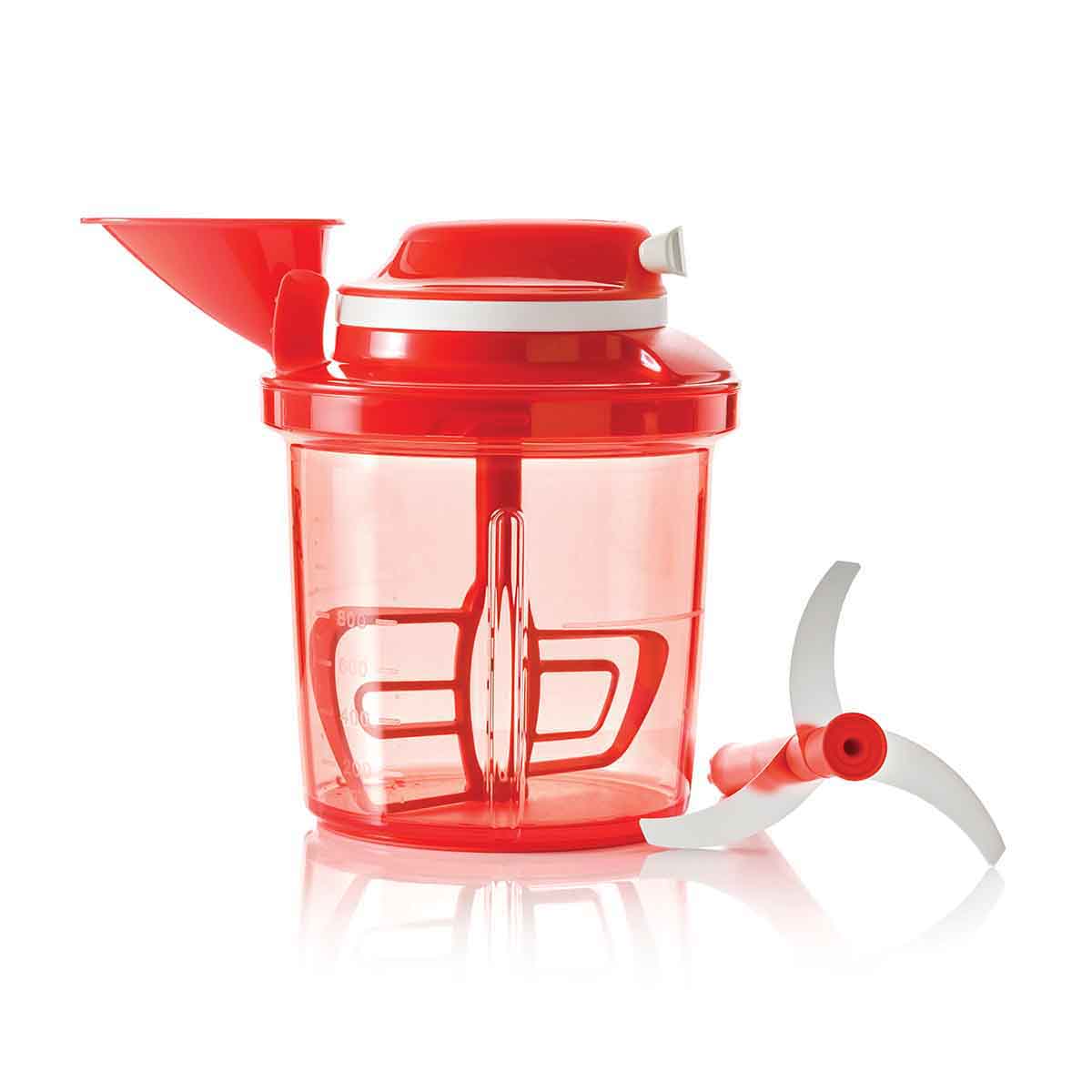 Buy Now →
Buy Now → 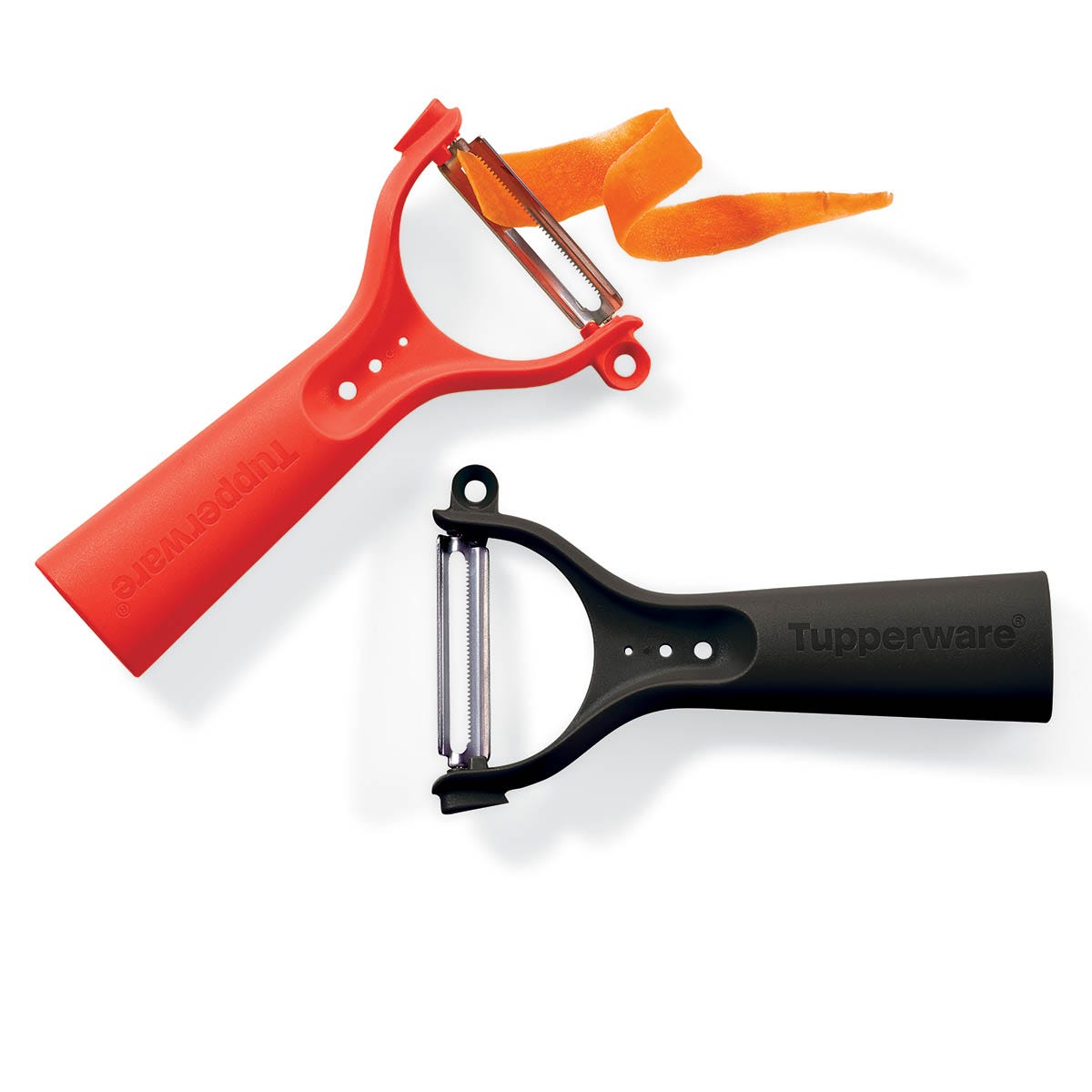 Buy Now →
Buy Now →  Buy Now →
Buy Now →  Buy Now →
Buy Now →  Buy Now →
Buy Now →  Buy Now →
Buy Now →  Buy Now →
Buy Now →  Buy Now →
Buy Now →  Buy Now →
Buy Now →  Buy Now →
Buy Now →  Buy Now →
Buy Now →  Buy Now →
Buy Now →  Buy Now →
Buy Now →  Buy Now →
Buy Now →  Buy Now →
Buy Now →  Buy Now →
Buy Now →  Buy Now →
Buy Now →  Buy Now →
Buy Now →  Buy Now →
Buy Now →  Buy Now →
Buy Now →  Buy Now →
Buy Now →  Buy Now →
Buy Now → 
stainless steel bowl and colander set
Buy Now → Buy Now →
Buy Now →  Buy Now →
Buy Now →  Buy Now →
Buy Now →  Buy Now →
Buy Now →  Buy Now →
Buy Now → companies i purchase from
This isn’t an exhaustive list, but these are some websites that have products helpful to THM. If you’re interested in ordering through my affiliate links, the links below (or any link on this page!) are great for that.
Note: with the exception of the Trim Healthy Mama store, of course, not all the products these companies sell are going to be THM friendly. Do a search in the main THM Facebook group or check the THM food analyzer app if you want clarification on a specific product.
companies i purchase from
 Buy Now →
Buy Now →  Buy Now →
Buy Now →  Buy Now →
Buy Now →  Buy Now →
Buy Now →  Buy Now →
Buy Now →  Buy Now →
Buy Now → Things I order from each site
Trim Healthy Mama Store :: primarily sweeteners, namely THM Pure Stevia Extract Powder, THM Super Sweet Blend, and THM Gentle Sweet. Also glucomannan, collagen, defatted peanut flour, beef gelatin.
Great Lakes Wellness Store :: sometimes Great Lakes has great sales! Their primary products are collagen and beef gelatin.
Amazon Store :: kitchen equipment, almond flour, coconut flour, vegetable glycerin, xylitol, sometimes collagen
Netrition Store :: LifeSource oat fiber (I also get this from Amazon)
iHerb Store :: just another source for items mentioned above
Lakanto Store :: monkfruit sweetener, although I don’t usually keep this on hand. Most of the sweeteners are on plan for THM (not the baking sweetener, which contains tapioca fiber), but many of their other products contain fillers that are either personal choice or off plan for Trim Healthy Mamas, so use discretion. Pure monkfruit extract is a good option for those of you who have allergies to stevia and sugar alcohols. Use my code ICECREAM in checkout for 15% off your order! (Does not overlap with sales.)
Tupperware
I’m a Tupperware consultant! If you’re interested in seeing the latest sales, check out my Tupperware page.
My favorite Tupperware products
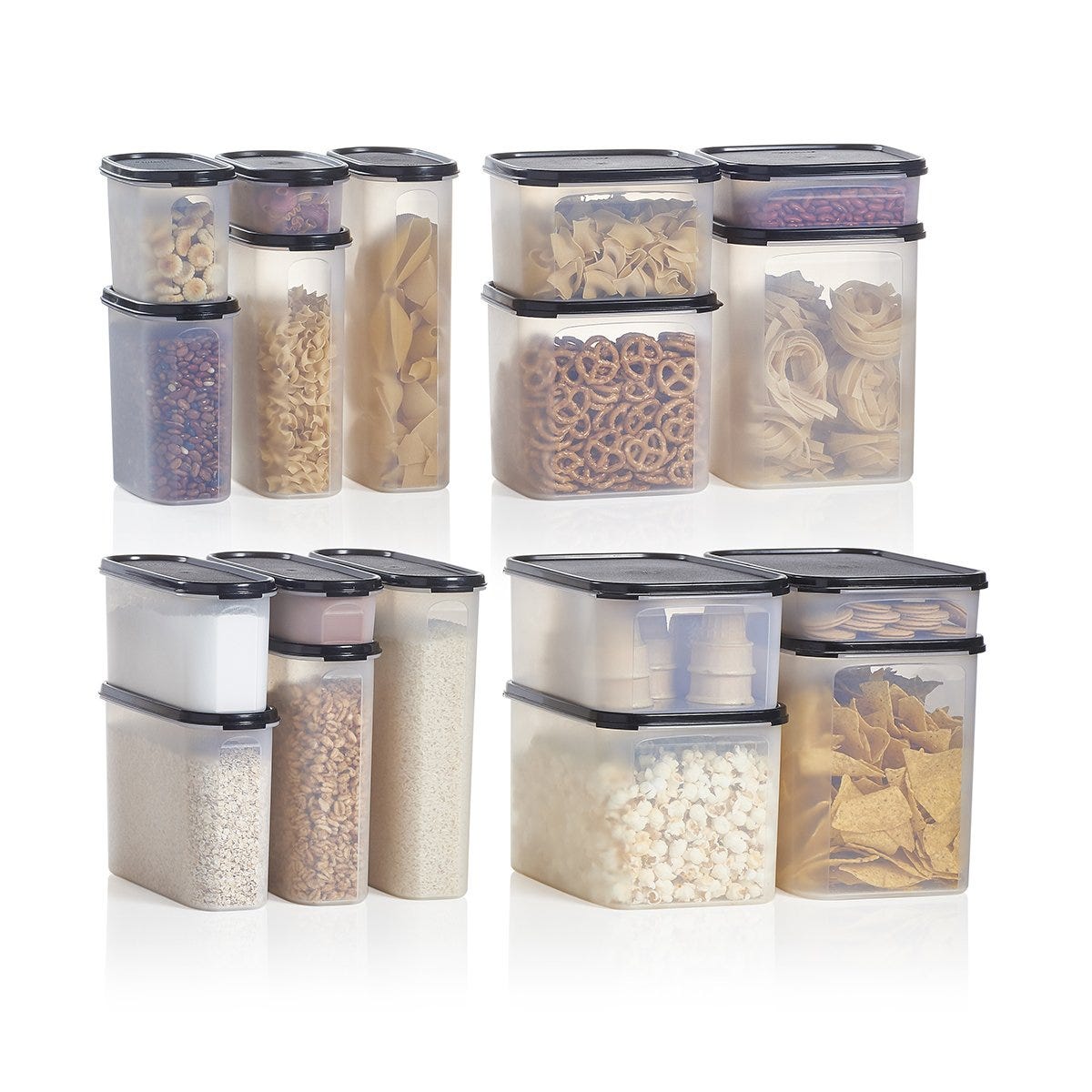 Buy Now →
Buy Now → 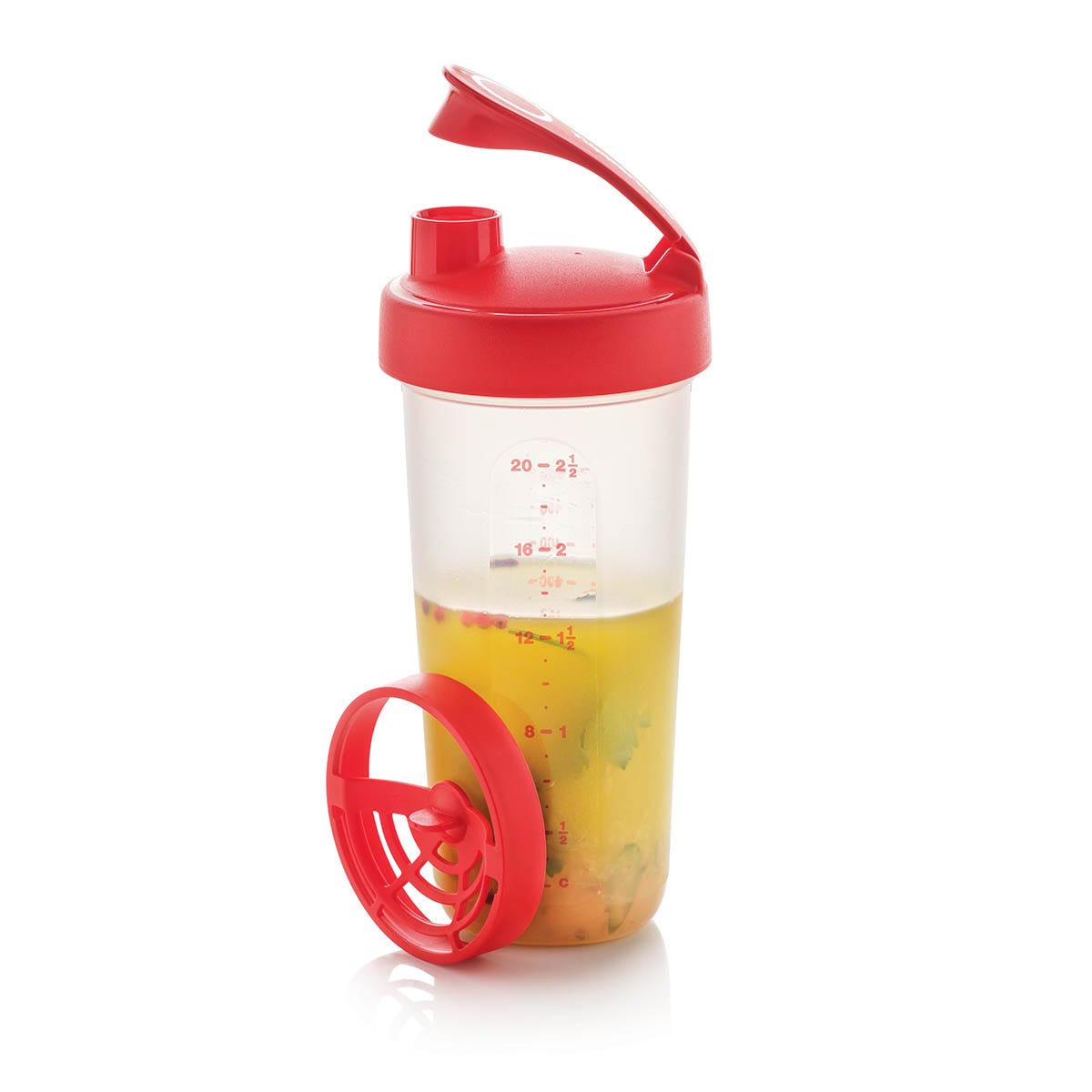
Tupperware Quick Shake Container
Buy Now →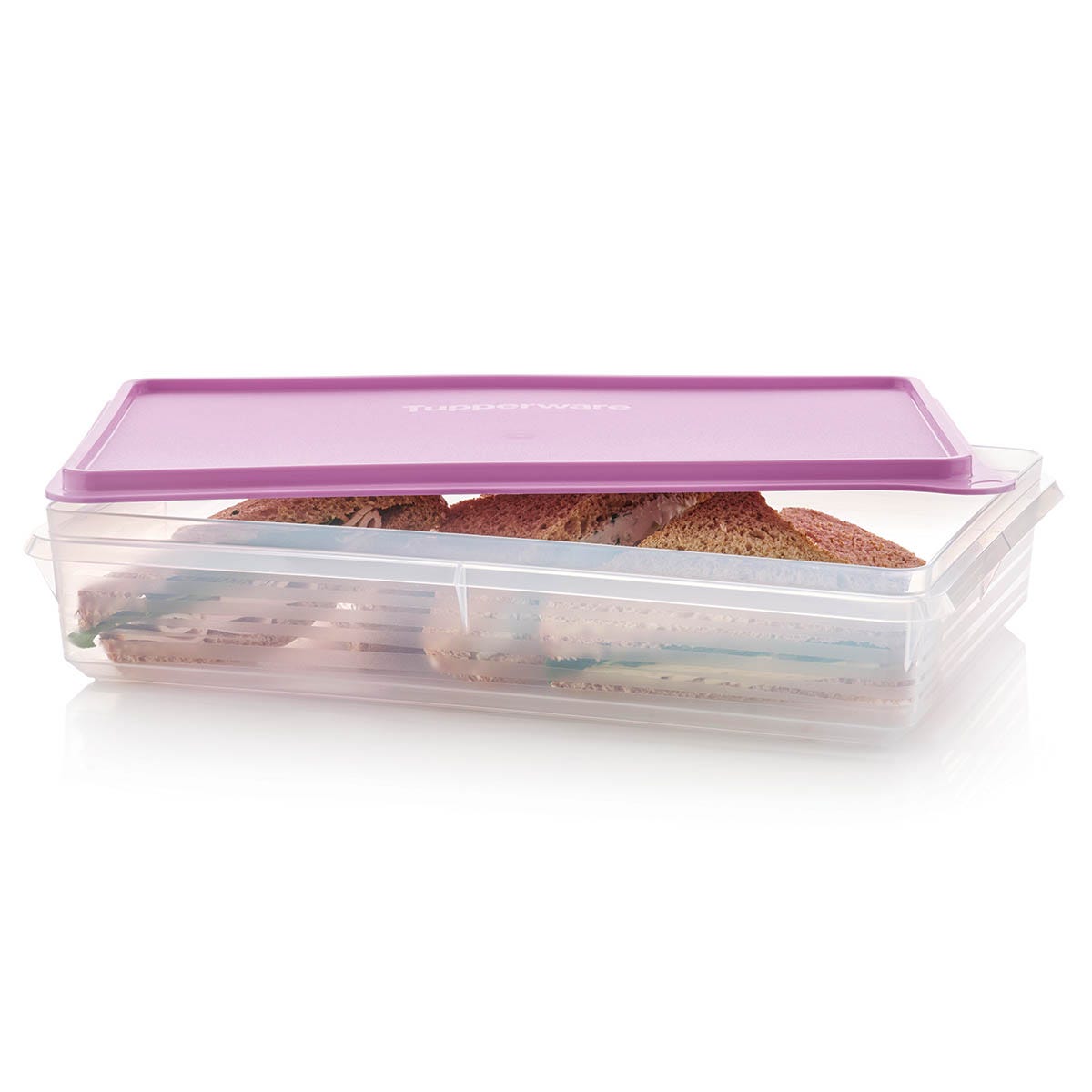
Tupperware Snack-Stor Large Container
Buy Now →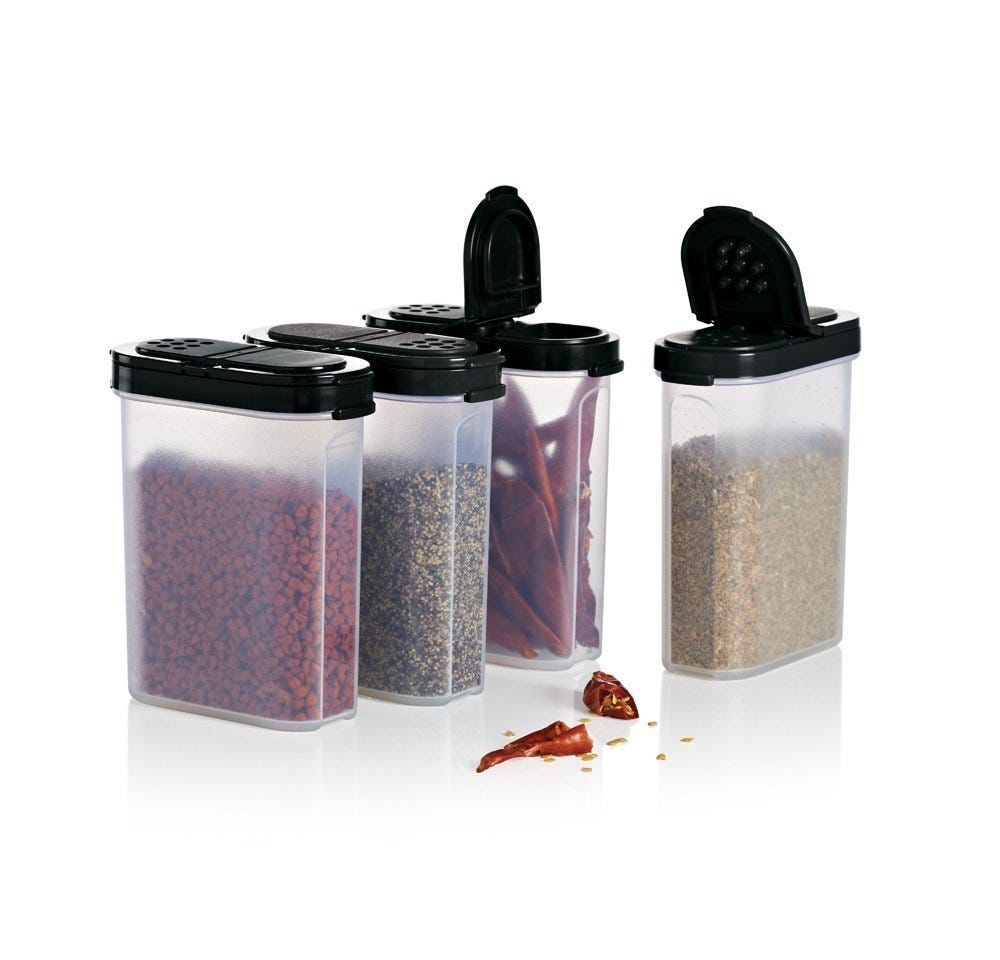 Buy Now →
Buy Now → 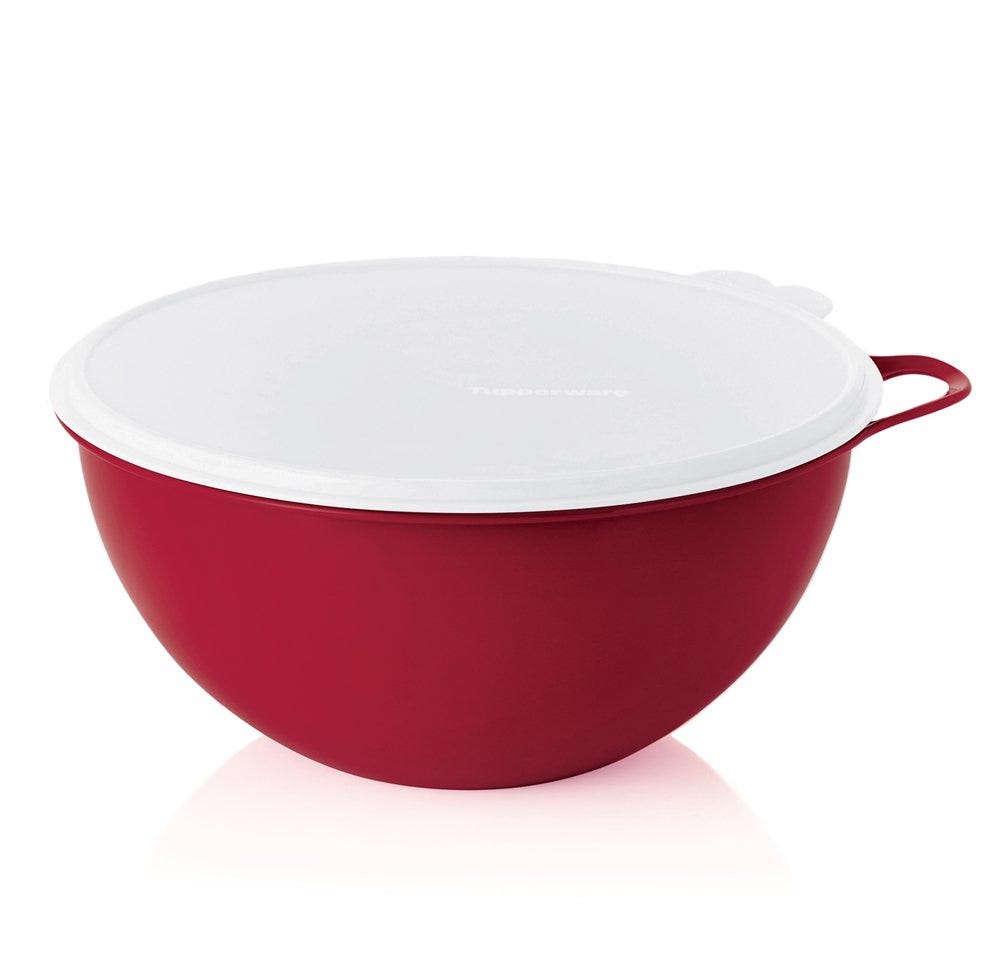 Buy Now →
Buy Now →  Buy Now →
Buy Now →  Buy Now →
Buy Now →  Buy Now →
Buy Now → 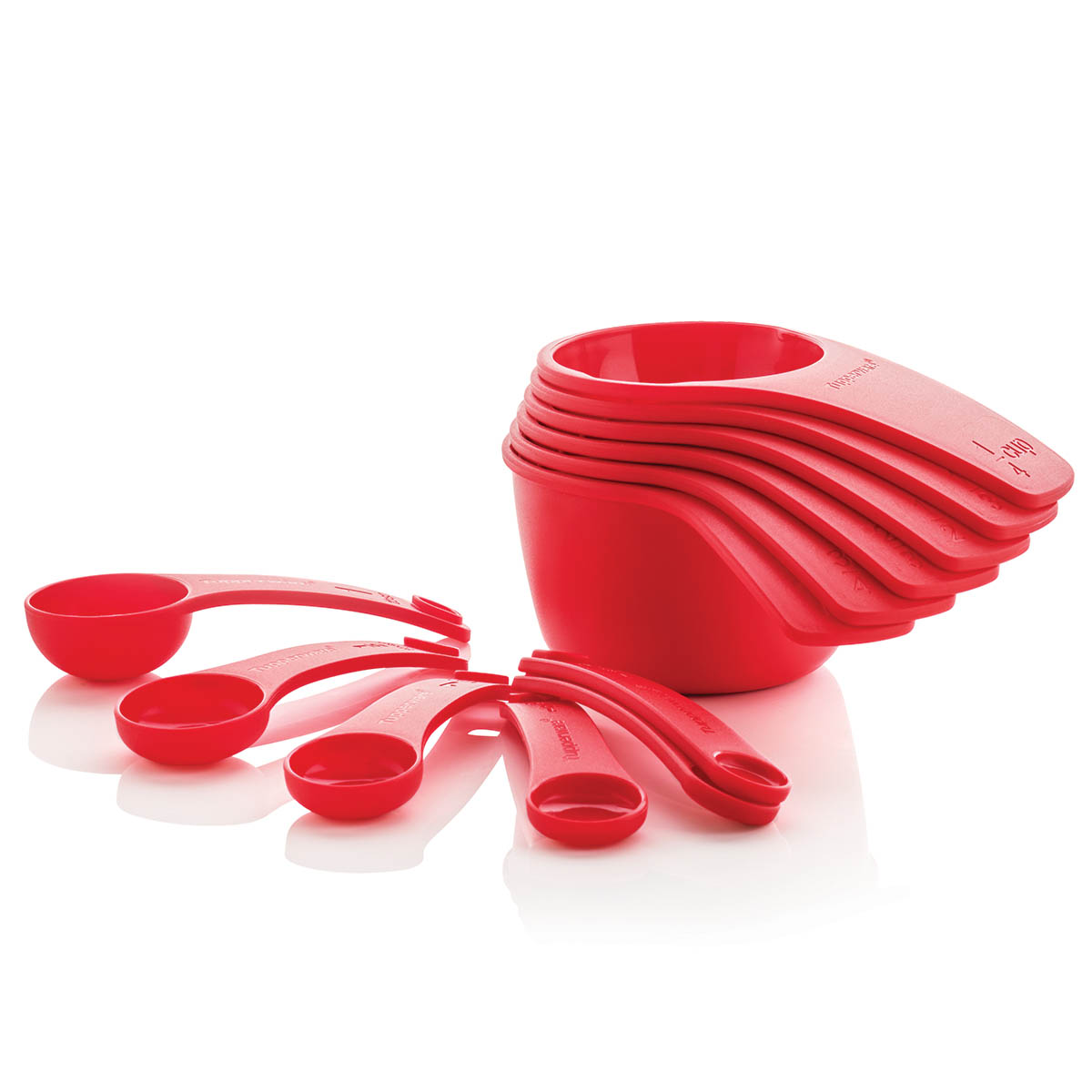 Buy Now →
Buy Now → 








